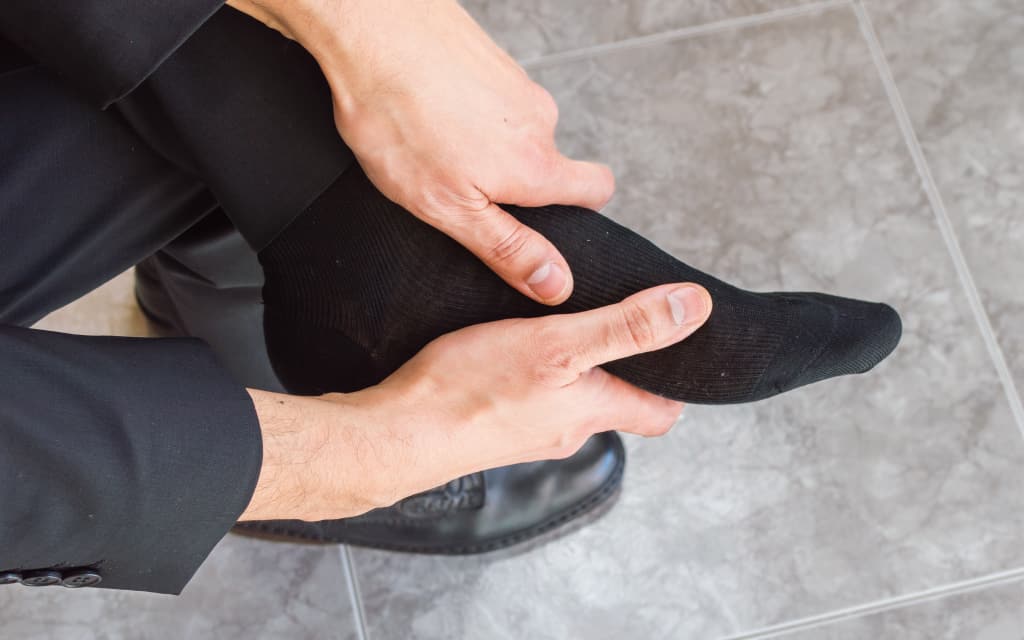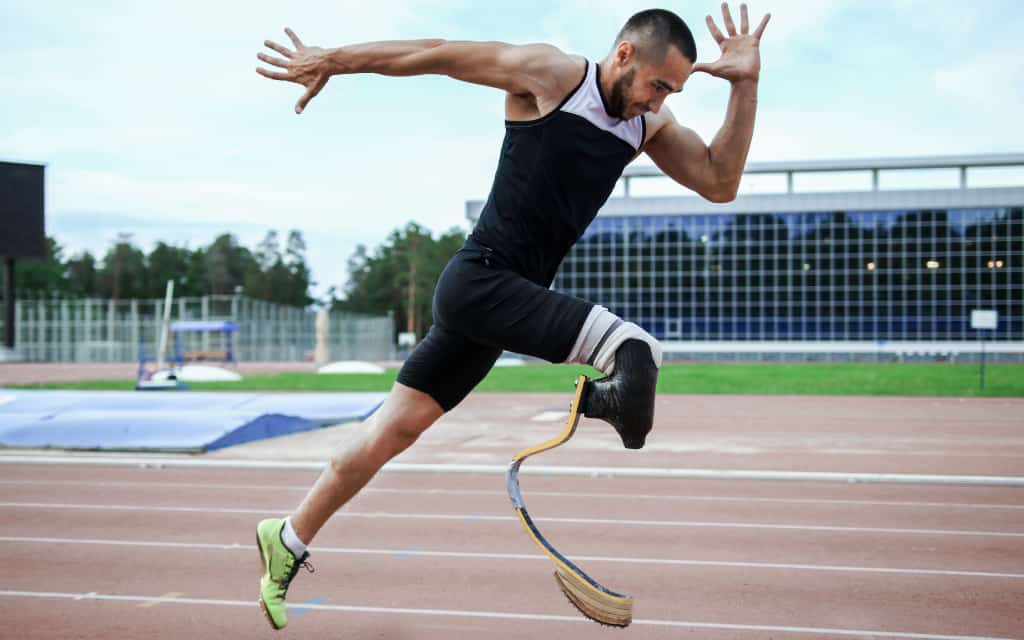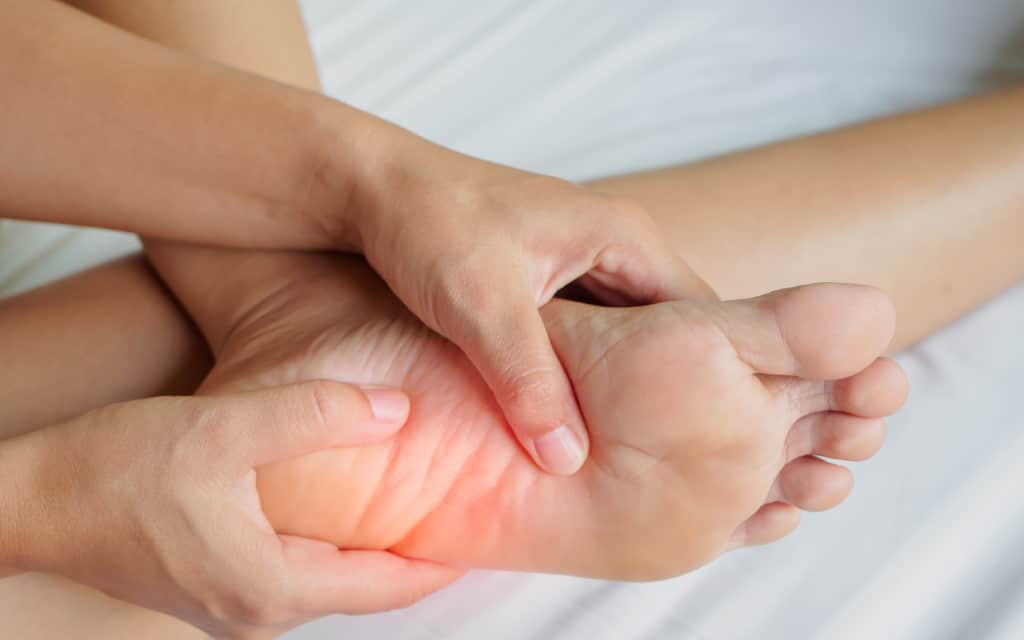
Screaming Plantar Fasciitis and a Puddle of Pain
Restaurant people are the toughest folks I know. Mentally and physically, we plow through more stress and challenges in one shift than most people do all week. (And they sit down when they work. Can you imagine that?)
We get sore. We fight through fatigue and injury. We don’t let illness stop us from getting the job done. (Note from Your Manager: We’ve all done it, but please don’t go to work sick and contagious.)
I’ve called in sick once in two decades and have willed my body through every challenge the Bar Gods ever threw at me, but one deceptive ailment hit me so viciously I wanted to saw off my legs.
Diagnosing my Demons
I used to work at a busy hotel bar with a jammin’ happy hour. From four to six we’d get buried in tickets. After shoveling out, the day bartender would scoot. I’d finish up with hotel regulars and after-dinner locals until midnight or so.
It was a big horseshoe bar, requiring me to move sideways and around corners a lot to reach over two dozen seats. It was a challenging dance, but I loved it.
I’d pump “Momma Said Knock You Out” all the way to work just to be ready. Either I’d kill it or it would kill me, and that second part was never going to happen.

The Blade Runner
My feet were yelling at me, but that’s not a surprise after getting my absinthe kicked every day. I was a bar warrior. I’d grind through it.
Stepping out of bed sucked. I probably looked like I’d sprained both ankles the way I so gingerly put weight on them. After gimping to the bathroom, my mobility would gradually return. Getting out of a chair stung. So did putting on shoes to go to work and getting out of the car.
All this pain was before clocking in.
Throughout the shift the heat would crawl up my calves, eventually to mid thigh. I started the day standing in a puddle of pain. By the time I clocked out I was knee deep in it.
It was the summer of 2012. Oscar Pistorius became famous for running in the Olympics on carbon-fiber artificial legs. (He wasn’t famous for the other thing yet.) A tiny part of my hindbrain was truly jealous. “That guy’s feet don’t hurt,” it said.
It was time to do something.
Admitting Injury
My wife knew I was in pain, but I never indicated or believed it was a serious ailment. Now I had to. I couldn’t endure this every day.
The fire was mostly in my heel and up my achilles tendon. My left was worse than my right. I searched online for “heel pain.”
I soon read about familiar symptoms. People reported pain when standing after sleeping or sitting for an extended time. I finally had a name for my monster: Plantar Fasciitis.

What is Plantar Fasciitis?
The plantar fascia is the thick band of tissue running along the bottom of your foot. It is a bowstring that connects your heel to your toes. It’s a ligament, not a muscle or tendon. It won’t stretch. When pushed too hard, it will “micro-tear.” Small amounts of damage heal over time, but too many micro-tears overwhelm the body’s ability to heal itself. The result is inflammation and pain.
You don’t really feel it in the sole of your foot. I don’t think it has any nerves. The strain is translated from the ligament to adjoining tendons and muscles. The pressure on the plantar fascia becomes stress on the achilles tendon and calf muscles, resulting in heel and calf pain.
The deceptive part of plantar fasciitis is that your pain is not where you are injured. You chase remedies for your lower leg when the damage is in the middle of your foot.
Steps toward Healing
Now that I had a name, I could plan an attack:
1: Healing While You Sleep

For six or eight hours (hopefully ten but probably four) they heal in this shape, then what do you do first thing in the morning?
You stand and tear open all of that healing. You force them back into a 90º position. That’s why it hurts so much.
Warming up and stretching your feet and legs before getting out of bed helps. Yet the greatest tool for my recovery was the night splint.>Night splints hold your feet at a right angle while you sleep. They are available from a doctor or drug store. They don’t feel natural at first. Going to sleep with an apparatus on each foot feels strange, but the first morning is magic.
Although full recovery will take weeks or months, if your experience is like mine, even on day one you will feel improvement. For the first time in forever you’ll sense yourself repairing rather than degrading.
2: Traction and Cushion
Night splints are certainly not the complete answer, but they are part of the process that will bring you back. The next thing to consider is proper footwear.
Shoes are certainly important. Before plantar fasciitis started gnawing at my feet, I chose shoes for grip and agility. I notoriously beat the hell out of them, churning through 3-4 pairs a year, always searching for the right fit.
In the depths of my puddle-of-pain days, I was wearing something like a track shoe for bartenders: light, close fitting and nimble with great wet traction. On my toes I felt like Mercury, but these couldn’t have been good for my arches.
Shoes are deeply personal. I can’t tell you what will work for your feet. I’ve spent my life chasing the perfect restaurant shoe and have never found it.
You might find a limited supply of non-slip shoes you can actually try on before you buy. You may be forced to purchase online or through work. In this case, freely use the return policy. Buy shoes, try them and send them back if they don’t work. Always have a backup pair. Don’t wait until one pair falls apart to buy your next pair or you won’t have the luxury of returning them if they aren’t right.
Let Your Feet Be Feet. After several years, numerous insoles and dozens of pairs of shoes, I’ve decided to listen to my feet rather than order them around.
The human foot is a miraculous device when you stop to appreciate it. Millions of years of evolution resulted in a complex series of muscles, bones, ligaments and tendons all balanced to contain your entire weight. They enable you to jump, run, dance and even layer Duck Farts while telling a joke.
I no longer force my feet into high-arched shoes with prescription orthotics. I wear wide shoes with stock memory foam insoles. They are a half size larger than I used to wear. I let my feet spread out and do the job they were born to do.
Only Two Parts of the Strategy
Night splints and the right shoes are only two steps on the way to recovery. Therapy and exercise are essential to beating plantar fasciitis. These are big topics and we’ll get into them in the future.
You also don’t have to suffer in the first place. Strengthening your feet, stretching all the muscles in your lower body and not ignoring pain will help you avoid repetitive stress injuries.
But we’re all warriors by nature, prone to tackling challenges with will and grit rather than common sense and research. Don’t suffer quietly and stubbornly like I did.
I’m not a doctor, just a guy with feet. Use my advice as a starting point. Listen to your body and medical experts. You can’t dominate the bar if your feet fall off.




